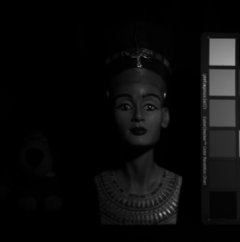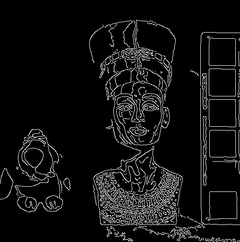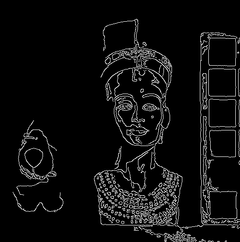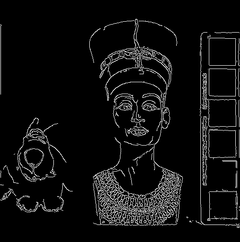
Dipl.-Inf. Johannes Jordan
Alumnus of the Pattern Recognition Lab of the Friedrich-Alexander-Universität Erlangen-Nürnberg
Multispectral Image Preprocessing
Edge detection is a well-understood preprocessing step for computer vision applications. However, common methods are limited to monochromatic images. Adapting them to multispectral or hyperspectral images, where each pixel holds a high-dimensional spectral vector is a difficult problem.
Previous approaches are either based on the image gradient or on pixel ordering. Gradient-based methods may fail to detect edges in the case of opposing gradients present in different spectral bands. To avoid this problem, ordering-based methods determine edge probability by a local R-ordering of adjacent pixels. However, it has been shown that like gradient-based methods, R-ordering edge detection is also prone to missing edges. Due to the locality of the ordering, pixels holding different values may be mapped to the same scalar.
In 2003, Toivanen et al. formulated a pixel ordering method for multispectral edge detection. It employs a Self-Organizing Map (SOM) to generate a global ordering of spectral vectors. While this method solves problems present in previous approaches, it is highly dependent on a good global ordering. As such an ordering is hard, if not impossible to find for complex scenes, it suffers from edge artifacts. We discuss this observation in detail and provide a solution to the problem by formulating an image gradient based on the SOM.
Publications:
Jordan, Johannes; Angelopoulou, Elli. Edge Detection in Multispectral Images Using the N-dimensional Self-organizing Map. 18th IEEE International Conference on Image Processing (ICIP), Brussels, Sept. 2011, pp. 3181 -3184, 2011
 |
 |
The ![]() spectral gradient is a crucial part of our framework. It extracts reflectivity information of various materials in the scene independent of incident light and scene geometry. This makes it very powerful when exploring a multispectral image interactively.
spectral gradient is a crucial part of our framework. It extracts reflectivity information of various materials in the scene independent of incident light and scene geometry. This makes it very powerful when exploring a multispectral image interactively.
However, a drawback of the spectral gradient is that the noise contained in the image data is often amplified by the differentiation. A solution to the problem is proper denoising. Most existing denoising methods work on intensity images alone. Applying such an algorithm on each image band separately is not optimal when looking at the spectral gradient. While the noise is reduced in each band, the smoothness of the spectral vectors is not necessarily improved.
Few work exists that explicitely exploits the typically highly correlated inter-band information in the image. Most notable work in the field is based on wavelet denoising. In our work we investigate how more recent denoising paradigms can fit to our problem.

 +49 9131 85 27891
+49 9131 85 27891
 +49 9131 85 27270
+49 9131 85 27270





